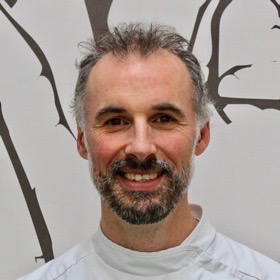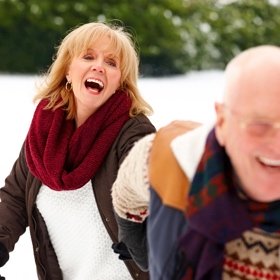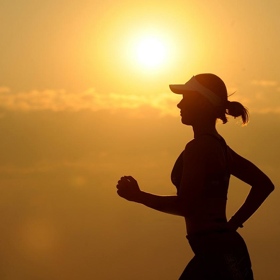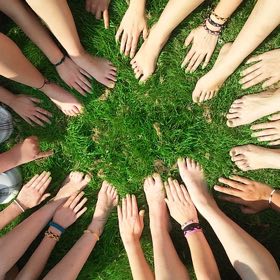Top 5 actions for well being
As an Osteopath at Shine, Newington Green, people come to me with a broad range of musculoskeletal complaints.
What we can do, in the brief time of the consultation can be powerful and is often enough to be the catalyst to trigger the individual’s healing process and the body’s equilibrium.
However an important part of this process is often what is done between consultations. Using our knowledge to give expert advice, a kind of ‘homework’ is a common part of the work of an osteopath.
This can range from specific muscle strengthening exercises; ways to improve cardiovascular health, postural recommendations or any other particular knowledge that the osteopath thinks may be helpful.
I always stress the importance of this aspect, as I feel it’s a continuation of the treatment. And yet it is common that at the  next session the client looks up and admits that they have either not done any of these extra things, or only managed a few days and then tailed off. We all have busy lives and changing our habits is often harder than we think. This got me thinking about my own struggles with doing or implementing things that I know will do me good, such as more exercise or keeping my mindfulness practice regular, especially with the New Year’s resolutions still echoing in my thoughts. The story in my head goes something along the lines of ‘everything is a bit hectic right now, once things calm down I will start’.
next session the client looks up and admits that they have either not done any of these extra things, or only managed a few days and then tailed off. We all have busy lives and changing our habits is often harder than we think. This got me thinking about my own struggles with doing or implementing things that I know will do me good, such as more exercise or keeping my mindfulness practice regular, especially with the New Year’s resolutions still echoing in my thoughts. The story in my head goes something along the lines of ‘everything is a bit hectic right now, once things calm down I will start’.
And of course this is a perfect way of procrastinating, because much of the nature of human existence is imperfect and messy, sprinkled with wonderful but brief moments of clarity. The idea that one-day on the horizon, a time will come when all the pieces of the puzzle of my life will slot together smoothly, is comforting, and yet like a mirage it is always just slightly out of reach. And if I put important things on hold till I get to that Promised Land, life inevitably gets more complicated very quickly.
During my studies, I was part of an innovative approach called OsteoMAP. This combined ‘hands on’ osteopathy, with mindfulness and acceptance based approaches, to support people with long-term persistent musculoskeletal pain. An integral part of this was teaching mindfulness skills to clients. As practitioners we learnt that we could not advise something that we were not engaged in ourselves, that on some level the client would know this and this would stop them from taking on the advice. So we had to develop our own mindfulness practice. I have tried to continue with this philosophy, of practicing what I preach, so I know personally how hard it can be to effect long-term changes. I am full of empathy when a client says they have not managed to do their exercises! In my attempts at making lasting beneficial changes in my life, I have found some insights helpful, and perhaps others may as well.
When I feel stressed and out of the ‘flow’ of life, I find it hard to enact change and I tend to sink into habitual ways of responding, which usually are no longer helpful. We know that neurons that fire together wire together, so actions we repeat become habitual. Developing our own resilience and sense of well being enables us to respond more constructively ‘in the moment’, especially during times of stress. This allows new ways of responding and with time and repetition these new ways become more beneficial habits. To develop this resilience, I have found great benefit from 5 guiding principles demonstrated in a comprehensive report of 2008 by the new economics foundation.
 The foundation investigated evidence for improving people’s well being and found that incorporating 5 actions into our daily lives helps us to develop resilience, feel good and function well. I try to think of these as signposts to help me move in the right direction, rather than rigid “to do’s”
The foundation investigated evidence for improving people’s well being and found that incorporating 5 actions into our daily lives helps us to develop resilience, feel good and function well. I try to think of these as signposts to help me move in the right direction, rather than rigid “to do’s”
Connect
So much of our modern lives are based around connection to the Internet and social media, which gives the illusion of connection with others. Connect with the real people around you, family, friends, colleagues and neighbours. Invest time in developing these connections as they will support and enrich.
Be Active
Being active is perhaps the single biggest thing we can do to improve our health. Go for a walk or run. Step outside. Most importantly, discover a physical activity you enjoy and that suits your level of mobility and fitness.
Take Notice
So often we are thinking of the future or dwelling on the past which disconnects us from our lived moment, and numbs us to the breadth of our feelings. Try to have periods of single tasking and staying in the present. Be curious and aware of the world around you and what you are feeling. Reflecting on your experiences will help you appreciate what matters to you.
Keep Learning
Try something new. Rediscover an old interest. Sign up for that course. The continuation of learning through life has the benefits of enhancing an individual’s self-esteem, encouraging social interaction and a more active life.
Give
Do something nice for a friend or a stranger. Thank someone. Smile. Volunteer your time. Seeing yourself within the wider community gives a healthier perspective, is rewarding and creates connections with the people around you.
I believe it is helpful for each person to reflect on what the meaning of the five actions is for themselves, rather than a prescriptive list.
Another component to improving our resilience has been explored by evolutionary psychology and modern neuroscience, and this will be the subject of a later blog.
(https://b.3cdn.net/nefoundation/8984c5089d5c2285ee_t4m6bhqq5.pdf)
Justin Redpath Osteopath Sports Massage Practitioner Craniosacral Therapist.
